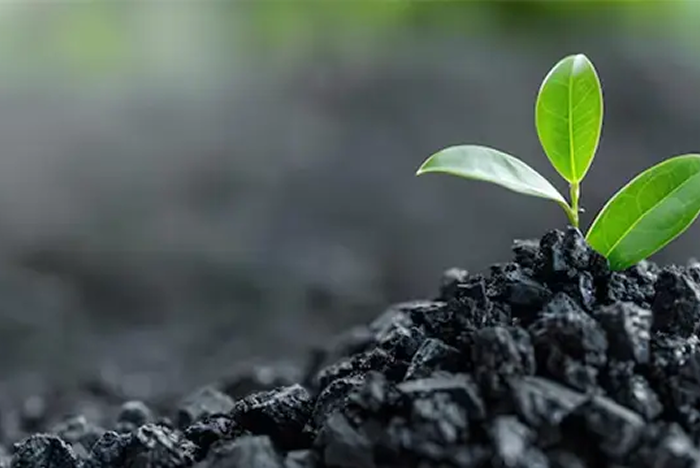Why include waste management projects into your carbon portfolio?
The portfolio approach
For companies striving to meet ambitious climate and sustainability goals, selecting the right mix of carbon projects is essential. A one-size-fits-all solution won’t do. Instead, organizations are increasingly adopting a portfolio approach, curating a diverse set of high-quality carbon credits aligned with their net-zero commitments, budget, target geographies, impact priorities, SDG goals, and engagement timelines.
ClimateSeed supports companies in developing these tailored portfolios. By understanding a company’s objectives and constraints, ClimateSeed helps identify the most suitable combination of carbon projects, including one key typology: waste management.
What are waste management projects?
Waste management projects focus on how we handle waste to minimize its impact on the environment and human health. Instead of treating waste as an afterthought in the production chain, these projects turn waste into opportunity by generating renewable energy, reducing pollution, and cutting greenhouse gas (GHG) emissions.
These projects embrace a circular economy approach, reimagining waste as a resource. They are primarily considered carbon avoidance projects because they prevent emissions, such as tonnes of carbon dioxide (CO2) or methane (CH4) that would have otherwise been released into the atmosphere and reduce waste.
Project examples include:
- Recycling projects, which reduce the need for energy-intensive virgin material extraction and processing.
- Methane recovery and avoidance projects, such as capturing gas from landfills to prevent methane, a potent greenhouse gas, from escaping.
- Organic waste composting projects divert food or agricultural waste from landfills and convert it into compost, avoiding methane generation and reducing the need for synthetic fertilizer, thus improving soil health.
- Anaerobic digestion projects, break down organic waste (like manure or food waste) in controlled, oxygen-free environments to produce biogas and digestate, reducing methane emissions and displacing fossil fuel use.
For more information on biochar's role in waste management, please read our article.

Why include waste management in your carbon portfolio?
High-Impact Emissions Avoidance
By preventing methane and other emissions from entering the atmosphere, waste management projects offer immediate, measurable climate benefits. Methane (CH4), for instance, has around 84 times the warming potential of CO₂ over a 20-year period or around 28 times the warming potential of CO2 over a 100-year period, making its capture one of the most effective short-term climate interventions.
For an example of a waste management project, please check out our blog on the circular economy.
Strong Alignment with SDGs and Broader Sustainability Goals
Waste management projects deliver multi-dimensional impacts and support several Sustainable Development Goals (SDGs), including:
SDG 3 – Good Health and Well-Being: by reducing waste burning and pollution.
SDG 7 – Affordable and Clean Energy: through biogas and waste-to-energy projects.
SDG 8 – Decent Work and Economic Growth: via job creation in waste handling and recycling sectors.
SDG 9 – Industry, Innovation, and Infrastructure: by fostering resilient, sustainable waste systems.
SDG 11 – Sustainable Cities and Communities: by improving local sanitation and urban waste solutions.
SDG 12 – Responsible Consumption and Production: by ensuring sustainable consumption and production patterns.
SDG 13 – Climate Action: by taking urgent action to combat climate change and its impacts by reducing waste and reducing greenhouse gas emissions.
Geographic and Strategic Flexibility
Waste-related challenges exist in every region, making these projects a versatile choice for companies or businesses with global operations or specific regional priorities. Whether in fast-growing cities or rural communities, waste management can offer tailored, scalable solutions that align with local needs. This versatility enables organizations to align their climate action with regions where they have stakeholder presence or operational influence, while contributing to local development.
High Additionality and Verifiable Impact
Waste management projects often depend on carbon finance to be viable, offering high additionality in the Voluntary Carbon Market (VCM). They are also backed by transparent methodologies and rigorous monitoring, making them a credible and effective choice for companies seeking environmental integrity in their carbon strategy.
Tangible and Communicable Results
Because they address a visible, relatable issue, these projects often carry strong storytelling value and are easily understood. They resonate with stakeholders, enhance ESG reporting, provide concrete data, and demonstrate real-world impact that employees, customers, and investors can see and understand.
Conclusion
Waste management projects offer a compelling combination of climate action, health and environmental co-benefits, and support for the circular economy. These projects not only tackle waste, but also find long-lasting solutions by embracing a circular economy approach. When integrated thoughtfully within a diversified carbon portfolio, they help companies meet climate targets while contributing to broader global development goals.
ClimateSeed works with organizations to identify and invest in high-impact waste management projects as part of a broader, customized portfolio. These projects are more than just carbon credits; they’re strategic tools for sustainable transformation.
Q&A
By choosing circular economy, reuse, or waste valorization projects, companies also adopt a coherent approach: supporting solutions that extend resource life, protect the environment, and promote local, sustainable socio-economic development—acting both within and beyond their value chain.
For more information, please read our blog: "Circular Economy and the Net-Zero Objective: Acting Within and Beyond Your Value Chain."
Biochar has emerged as a powerful waste-to-carbon technology. Produced through pyrolysis by heating biomass in low-oxygen environments, biochar transforms organic waste into a stable form of carbon with multiple environmental co-benefits.
In the context of waste management, it offers a unique value proposition: divert waste, sequester carbon, and regenerate soils. However, its effective integration into carbon markets and waste systems requires rigorous standards, life-cycle accountability, and clarity around production scale and quality.
For more information, please read our article: "The Role of Biochar Beyond Nature-based Solutions"
To get started on your organization's carbon footprint, follow these key steps:
Define the scope: Identify the activities, sites and sources of emissions to be included in the carbon footprint.
Collect data: Gather data on energy consumption, vehicle emissions, raw material consumption, etc.
Calculate emissions: Use specific emissions factors to convert consumption data into CO₂ emissions.
Analyze results: Evaluate major emissions items and identify reduction opportunities.
Plan actions: Develop an emissions reduction strategy based on the analysis.
Implement and monitor: Implement reduction measures and monitor their effectiveness over time.
It is advisable to call on the expertise of a specialist service provider such as ClimateSeed to measure your carbon footprint accurately and to benefit from advice tailored to your sector and your specific requirements. Please contact us for further details.
Share this
You May Also Like
These Related Stories

The Role of Biochar Beyond Nature-based Solutions

Circular Economy and the Net-Zero Objective: Acting Within and Beyond Your Value Chain


